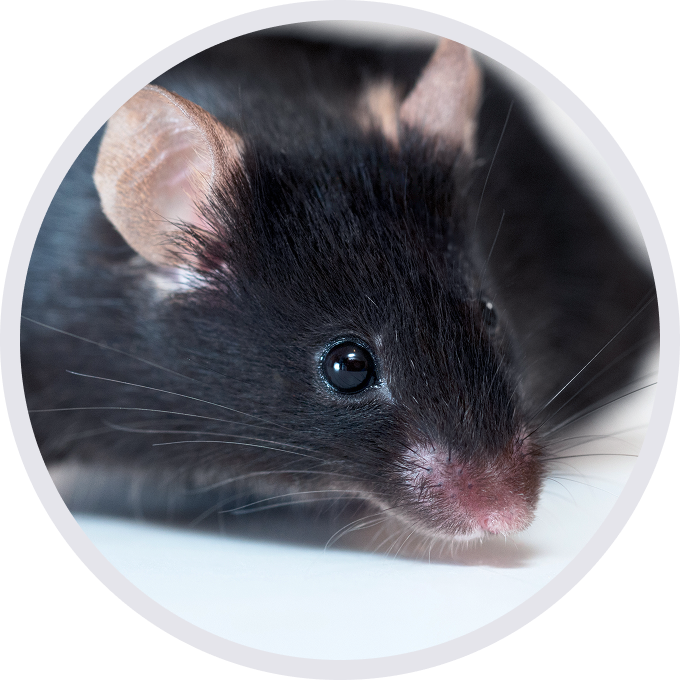Description
- Cholesterol esterification is another way to prevent the accumulation of free cholesterol within cells. The human acyl-coenzyme A:cholesterol acyltransferase (ACAT) can regulate the storage or secretion of cholesterol through esterification, maintaining the balance between free cholesterol and cholesterol esters. ACAT1 is widely expressed in cells throughout the body, but its expression is significantly higher in macrophages, epithelial cells, and steroidogenic cells compared to other cell types. Mammals have two isoenzymes, ACAT1 and ACAT2. Both are transmembrane proteins, with ACAT1 predicted to have nine transmembrane domains and ACAT2 having two to five domains. The first 140 amino acids of ACAT1 are located in the cytoplasm and mediate the formation of a tetramer composed of two homodimers. Whether ACAT2 exists in a polymeric form is unknown.
- Cholesterol is an allosteric activator of ACAT1. Cholesterol can activate ACAT1 by directly binding to it, and the activated ACAT1 can esterify intracellular free cholesterol, storing it in lipid droplets. This positive feedback mechanism allows for rapid regulation of intracellular free cholesterol levels. ACAT2 is primarily expressed in intestinal epithelial cells, with trace amounts in the liver.
- In mice, blocking ACAT1-mediated cholesterol esterification has been shown to improve Alzheimer's disease and inhibit the growth of pancreatic and prostate cancer tumors. Inhibiting ACAT1 in CD8+ T cells increases plasma membrane cholesterol, promotes T cell receptor clustering and immune synapse formation, ultimately enhancing the anti-tumor activity of these cells. This suggests that ACAT1 could be a novel therapeutic target for cancer treatment. ACAT1 inhibitors have previously been shown to alleviate amyloid pathology, reduce the size of hepatocellular carcinoma tumors, inhibit the growth and metastasis of pancreatic cancer tumors, prevent prostate cancer, and enhance the anti-tumor response of CD8+ T cells, as well as immunotherapy. Additionally, knocking out ACAT1 can alleviate atherosclerotic phenotypes.
- Targeting strategy: The exons 1-12 of mouse Acat1 gene that encode signal peptide, extracellular domain, cytoplasmic portion, transmembrane domain and 3’UTR were replaced by human counterparts in B-hACAT1 mice. The promoter and 5’UTR region of the mouse gene are retained. The ACAT1 expression is driven by endogenous mouse Acat1 promoter, while mouse Acat1 gene transcription and translation will be disrupted.
- Protein expression analysis: ACAT1 was detected in heart, liver, spleen, lung, kidney and brain of both wild-type mice and homozygous B-hACAT1 mice, as anti-ACAT1 antibody was cross reactive between human and mouse.
- mRNA expression analysis: Mouse Acat1 mRNA was only detectable in wild-type mice. Human ACAT1 mRNA was only detectable in homozygous B-hACAT1 mice.
Targeting strategy
Gene targeting strategy for B-hACAT1 mice.
The exons 1-12 of mouse Acat1 gene that encode signal peptide, extracellular domain, cytoplasmic portion, transmembrane domain and 3’UTR were replaced by human counterparts in B-hACAT1 mice. The promoter and 5’UTR region of the mouse gene are retained. The ACAT1 expression is driven by endogenous mouse Acat1 promoter, while mouse Acat1 gene transcription and translation will be disrupted.
Protein expression analysis
Western blot analysis of ACAT1 protein expression in homozygous B-hACAT1 mice. Various tissue lysates were collected from wild-type C57BL/6JNifdc mice (+/+) and homozygous B-hACAT1 mice (H/H), and then analyzed by western blot with cross-reactive anti-ACAT1 antibody (Proteintech, 16215-1-AP). 40 μg total proteins were loaded for western blotting analysis. ACAT1 was detected in heart, liver, spleen, lung, kidney and brain of both homozygous B-hACAT1 mice and wild-type mice.
mRNA expression analysis
Strain specific analysis of Acat1 mRNA expression in wild-type C57BL/6JNifdc and B-hACAT1 mice by RT-PCR. Heart and brain RNA were isolated from wild-type C57BL/6JNifdc (+/+) and homozygous B-hACAT1 mice (H/H), then cDNA libraries were synthesized by reverse transcription, followed by PCR with mouse or human ACAT1 primers. Mouse Acat1 mRNA was only detectable in wild-type mice. Human ACAT1 mRNA was only detectable in homozygous B-hACAT1 mice, but not in wild-type mice.
* When publishing results obtained using this animal model, please acknowledge the source as follows: The animal model [B-hACAT1 mice] (Cat# 113405) was purchased from Biocytogen.

